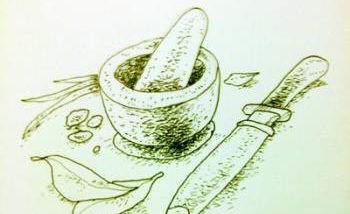There are many classifications of arnis; the better-known categories are arnis matador (combat arnis), arnis entablado (theatrical arnis), arnis jugado (sport arnis) and arnis guerrero (warrior arnis). The late Filipino martial arts (FMA) scholar Pedro Reyes stated however that there is one more type of arnis unknown to many.
In an article titled Filipino Martial Tradition, he wrote, “At the same time, a branch of arnis that so many aspire to learn but only a handful can master became Christianized. I refer to esoteric arnis, which deals with healing and the use of oracion” or magical prayers (Rapid Journal, Vol. 4 No.1).
In another article he wrote titled “Echoing the Energy’s Equation,” (Rapid Journal Vol.3 No. 2), Reyes recalled his personal experience with esoteric arnis through the person of the late Antonio Illustrisimo, “At one time I went to the Rizal Park to discuss some business with Gran Maestro Antonio “Tatang” Illustrisimo even though I had a bad cold (flu). During a pause in our conversation, I mentioned the misery the cold was causing me.
The old master fell silent. Then a bolt of energy jolted me as it entered between my shoulder blades, sped down my spine and spread throughout my body. By the time I left the park my knees had stopped aching, my fever was down, and I was coughing only occasionally. I never had to go to bed. He aborted the flu by silently reciting an oracion.”
Reyes wrote that based on the classifications made by American psychologist Dr. Lawrence LeShan of paranormal healing, the kind of healing elicited by esoteric arnis was classified as Type 5 healing. “In Type 5 healing, he [the practitioner] unites with the universe, but remains aware that he is a part of the universe, different from other parts, though still united,” he explained.
Reyes pointed out that such an equation where the practitioner can still “differentiate himself while remaining united,” allowed him to summon the power of the universe to heal the patient. “Note that it is not the healer who heals, it is the universe,” he emphasized.

illustration by Perry Gil S. Mallari
While Reyes discourse may sound vaguely esoteric, it has obvious parallels with the findings of Quantum physics. Physicist Fred Alan Wolf said that new discoveries in Quantum physics point to the direction connoting that the universe couldn’t exist without the mind entering into it, that the mind actually creates the very thing that is being perceived.
To this exciting development Wolf also stated, “We’re really now moving in to a new era, it’s the era where the last frontier is not space as ‘Star Trek’ would say but it’s going to be the mind.”
The origins of esoteric arnis that Reyes mentioned in his writings could be traced to the babaylan traditions of pre-Hispanic Philippines. A babaylan is a spiritual leader possessing the ability to heal and to foresee the future. A male or a female could perform the function though the majority of the babaylans before the coming of the Spaniards were women.
The babaylan is also a wisdom-keeper and philosopher of the community and was highly esteemed in pre-Hispanic Filipino societies. The babaylan traditions were abolished upon the onset of European and American colonialism in the country.
On this transition Reyes wrote, “In many cases, the changes were not too traumatic. For example, the arnisadores simply moved the great days of initiation into the oraciones of the Mood Goddess to the days of the Lent and to All Souls Day.
As for the celebration of the Earth God – Christmas became one of them, leaving only the summer initiations without Christian equivalents. Incidentally, arnisadores prefer to offer themselves to the Goddess. A traditional practice, for example, is to drill during the nights of the moon to seek the favor, protection and strength of the Great Mother.”
While their function in the community was basically spiritual, a number of babaylans participated in various uprisings. Two known babaylans, Ponciano Elofre, also known as Dios Buhawi (God of the Whirlwind) and Dionisio Seguela (or Dionisio Papa y Barlucia), also called Papa Isio (Isio the Pope) incited and participated in a politico-religious revolt in Negros in the late 19th century against the Spaniards.
A former cabeza de barangay, Elofre’s 1887 revolt was grounded on two issues: forced payment of taxes and religious freedom. He revived the ancient rites of the babaylans resulting to his group, which numbered around 2,000 to be called “Babaylanes.” Elofre died in the town of Siaton in 1888 after an encounter with the Spaniards.
Seguela, meanwhile rose from the ranks of a remnant group of Babaylanes after Elofre’s death. He combined the issues of religious freedom, agrarian reform and nationalism in his revolution. It took a long time before he gave up his struggle.
While General Miguel Malvar, arguably the last leader of the Philippine Revolution to surrender to the Americans gave up the fight on April 16, 1902; Seguela lay down his arms only on August 6, 1907. The Americans sentenced him to death but the punishment was later reduced to life imprisonment. Seguela died in the Old Bilibid Prison in Manila in 1911.
Today, not so many arnisadores are keen on pursuing the knowledge of esoteric arnis for the reason that some facets of its teachings run against the grain of their Catholic or Protestant faiths.





















